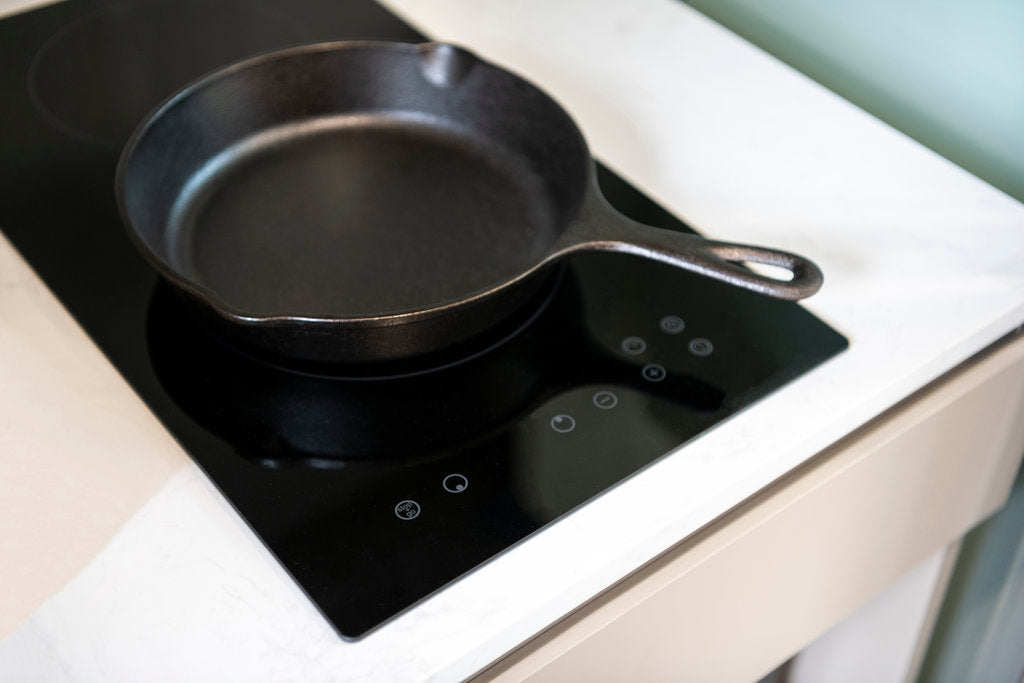Tips for Using Cast Iron on Induction: Maximize Your Cooking
Written By James Morgan
Cooking enthusiasts, particularly barbecue lovers, are always on the lookout for the best tools and techniques to enhance their culinary experiences. Among the many tools available, cast iron cookware stands out for its durability and excellent heat retention properties. If you're an avid fan of grilling and barbecuing, you might have wondered about using cast iron on an induction cooktop. This article will explore tips for using cast iron on induction stoves, ensuring that your culinary adventures are successful and enjoyable.
Induction cooking has gained popularity due to its efficiency and precision in temperature control. However, using cast iron on induction cooktops can be a bit challenging without the right guidance. While induction cooktops heat quickly and efficiently, not all cookware is compatible with them. The good news is that cast iron is generally induction-friendly, but there are specific tips you should follow to ensure optimal results.

Understanding Induction Cooking
Before delving into the specifics of using cast iron on induction cooktops, it's essential to understand what induction cooking entails. Unlike traditional cooking methods, induction cooking uses electromagnetic fields to heat pots and pans directly. This method is not only fast but also energy-efficient, making it a favorite among modern chefs. To learn more about the science of induction cooking, check out this detailed explanation.
Benefits of Using Cast Iron on Induction
One of the primary benefits of using cast iron on induction stoves is its excellent heat retention. Cast iron maintains a consistent temperature, which is ideal for achieving the perfect sear on meats. Additionally, cast iron's durability means it can withstand the direct heat of induction cooking without warping or degrading over time.
Another advantage of using cast iron is its versatility. Whether you're searing steaks or frying vegetables, cast iron can handle it all. Plus, its ability to go from stovetop to oven makes it an invaluable tool in any kitchen. If you're curious about maintaining the seasoning of your cast iron after using it on an induction cooktop, don't miss this helpful guide.
Essential Tips for Using Cast Iron on Induction
1. Ensure Cookware Compatibility
Before using cast iron on an induction stove, ensure that your cookware is compatible. Most cast iron pans are induction-friendly, but it's always a good idea to double-check. Look for a flat, smooth base to ensure proper contact with the induction surface. If you're in the market for new cookware, consider these induction-friendly cast iron pans.
2. Preheat Gradually
Induction cooktops heat up quickly, but it's advisable to preheat your cast iron gradually. Start on a low setting and gradually increase the temperature to prevent thermal shock. This method ensures even heating and protects your cookware from potential damage.
3. Use a Heat Diffuser
If you're concerned about potential hot spots or uneven heating, consider using a heat diffuser. A heat diffuser sits between the cooktop and the pan, distributing heat evenly. This tool is particularly useful for delicate dishes that require gentle, consistent heat.
4. Maintain Your Cookware
Proper maintenance is crucial for extending the lifespan of your cast iron cookware. After cooking, allow the pan to cool before washing it. Avoid using harsh detergents; instead, opt for warm water and a soft brush. Once clean, dry the pan thoroughly and apply a thin layer of oil to maintain its seasoning. For more insights on cleaning cast iron after induction cooking, this article offers valuable tips.
Common Mistakes to Avoid
1. Using Detergent
While it might be tempting to use detergent on your cast iron, avoid it at all costs. Detergents can strip the seasoning from the pan, leading to rust and reduced non-stick properties. Instead, use a gentle scrubber and water to clean your pan.
2. Overheating the Pan
It's easy to overheat cast iron on an induction stove due to its rapid heating capabilities. Be mindful of the heat settings and always start low. Overheating can cause food to stick and damage the seasoning on your pan.
Conclusion
Using cast iron on induction cooktops can elevate your cooking experience, offering precise control and consistent results. With the right techniques and maintenance practices, your cast iron cookware will remain a staple in your kitchen for years to come. For more insights into restoring cast iron after induction use, this detailed guide is a must-read.

FAQ Section
1. Can all cast iron be used on induction cooktops?
Most cast iron cookware is compatible with induction cooktops. However, it's essential to ensure the base is flat for optimal contact.
2. How do I prevent my cast iron from scratching the induction surface?
To prevent scratches, ensure the base of your cast iron is smooth and clean. You can also use a heat diffuser for added protection.
3. Is it necessary to re-season cast iron after induction use?
It's a good practice to re-season your cast iron after using it on an induction cooktop. This step helps maintain its non-stick properties and prevent rust.



